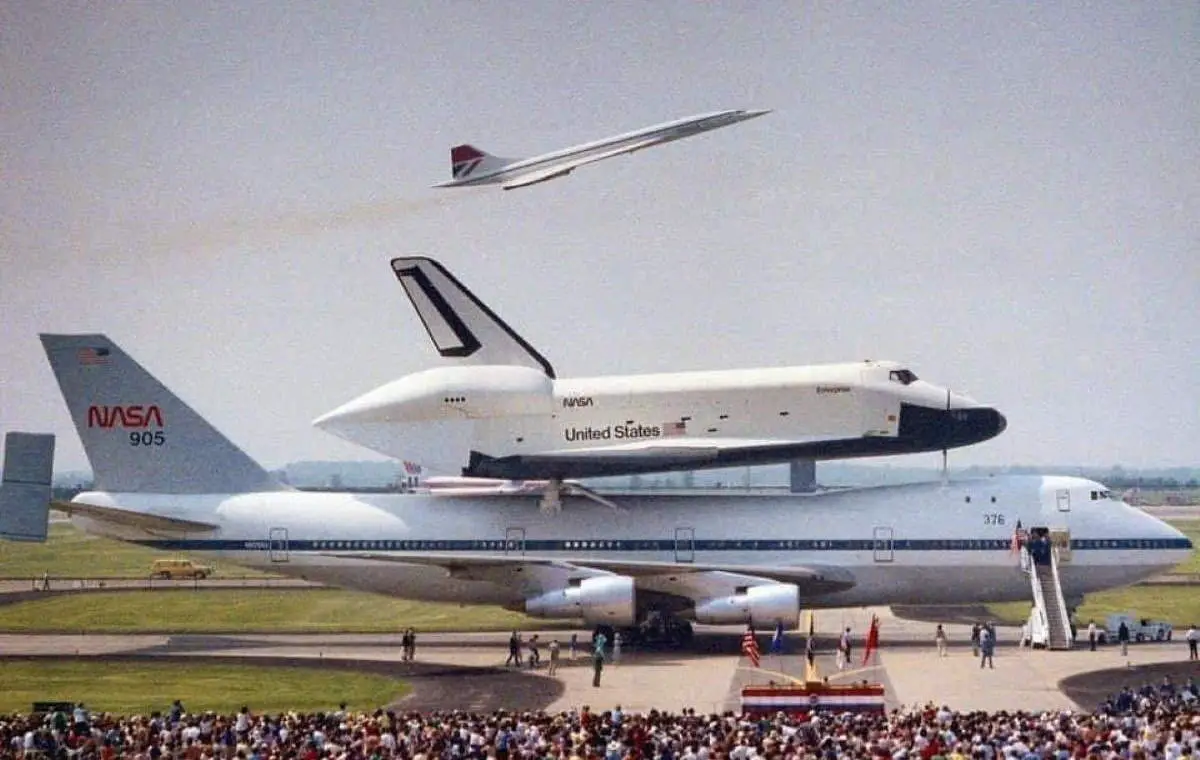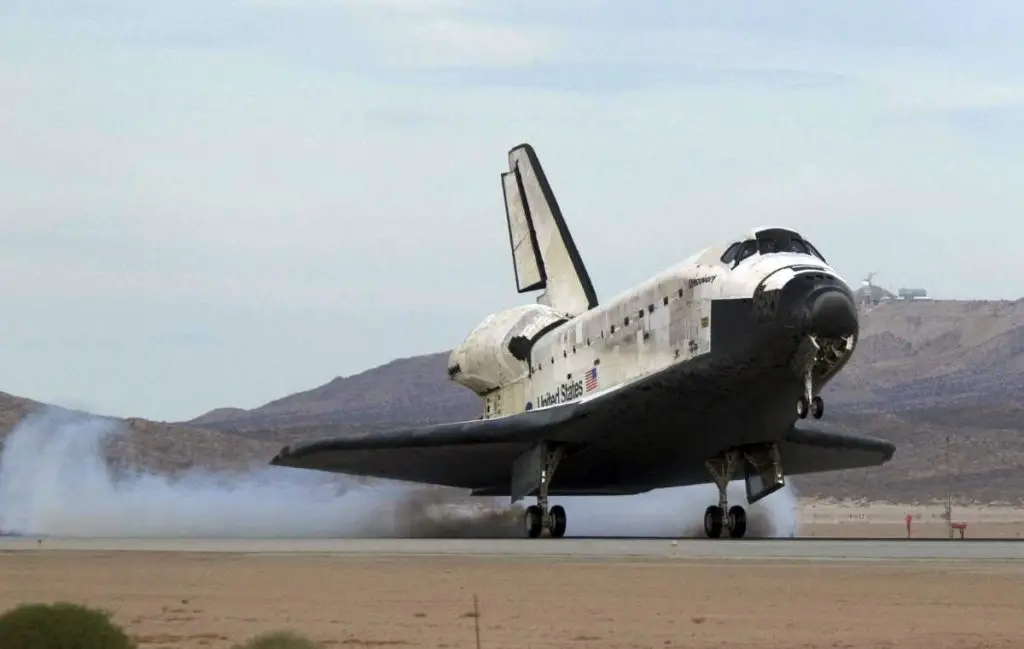Washington Dulles International Airport has shared a strikingly beautiful throwback photo on their Twitter account (@Dulles_Airport): The year 1986, the Space Shuttle Enterprise on top of a Boeing 747, while a Concorde was taking off in the background. A photo that can never be replicated. Total aviation and space exploration greatness.
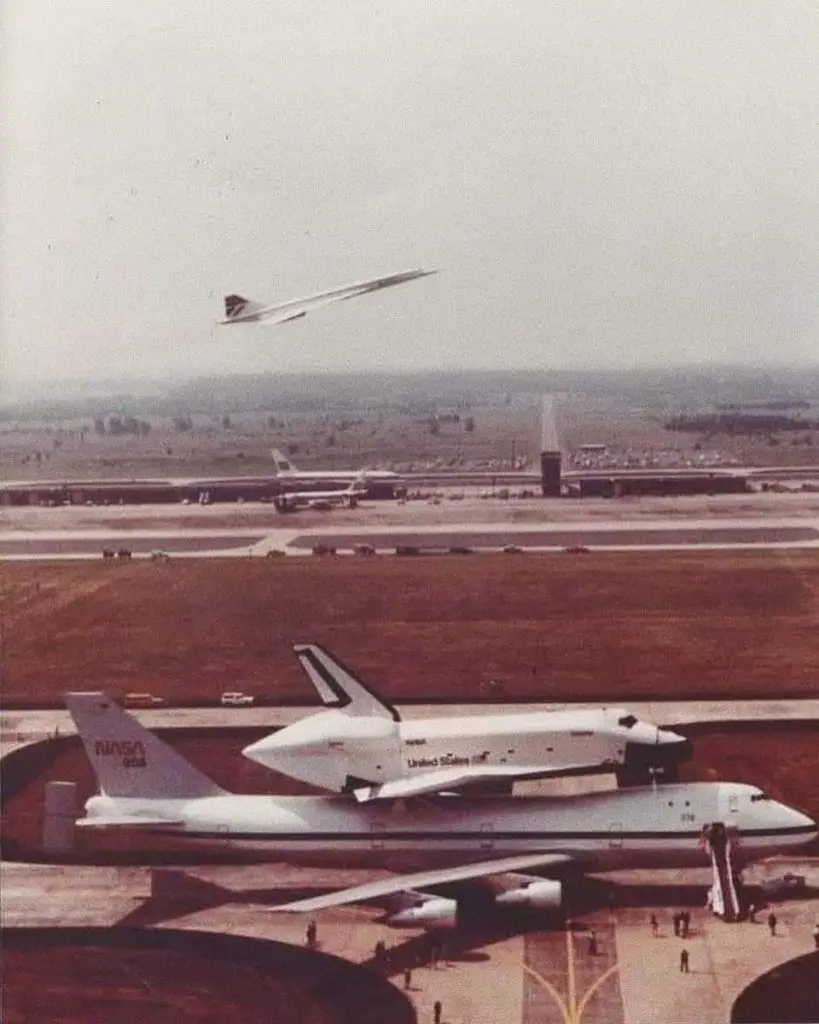
Here is the same scene from a different point of view:
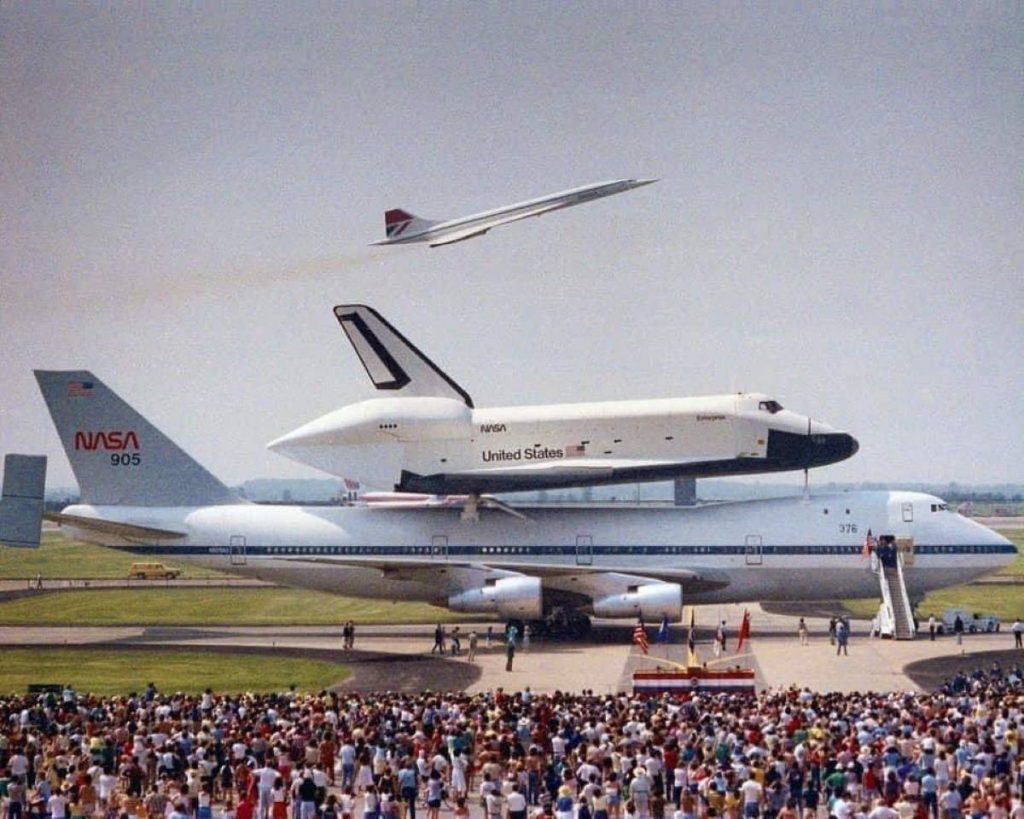
Why there’s a Space Shuttle on top of a Boeing 747?
Space Shuttles landed usually at the Shuttle Landing Facility at the Kennedy Space Center in Florida, or sometimes at Rogers Dry Lake in Edwards Air Force Base, California. If the landing occurred at Edwards, the orbiter was flown back to the Kennedy Space Center on a specially modified Boeing 747, the Shuttle Carrier Aircraft.
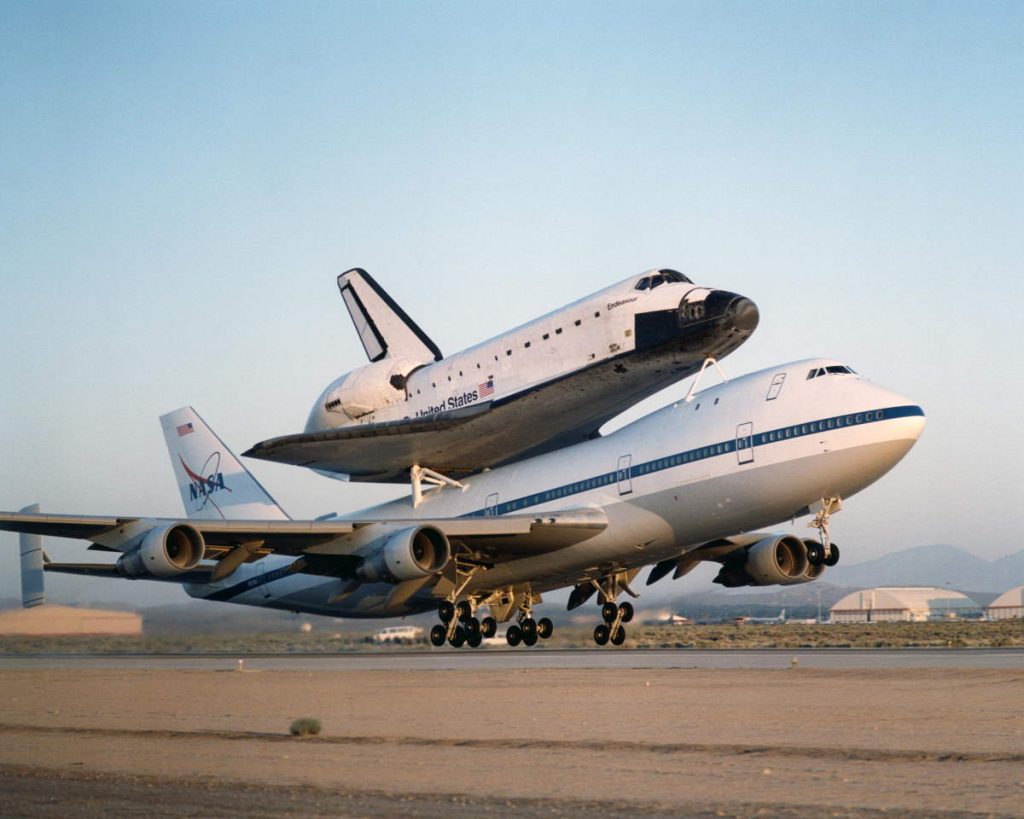
Concorde
Concorde was a British – French supersonic, turbojet-powered passenger airliner operated until 2003. At Mach 2.04 (1,354 mph or 2,180 km / h at cruise altitude), it had a maximum speed over twice the sound speed, with seating for 92-128 passengers. Concorde was first flown in 1969, entered service in 1976, and continued to fly for the next 27 years.
Concorde is one of only two commercially operated supersonic passenger aircraft; the other being the Soviet-built Tupolev Tu-144, which was operational for a short time in the late 1970s. Tu-144 made its maiden flight on December 31, 1968, three months before the Concorde. But, it suffered from reliability and engineering issues, and the 1973 Paris Air Show crash, restricted the viability for regular use.
Space Shuttle Enterprise
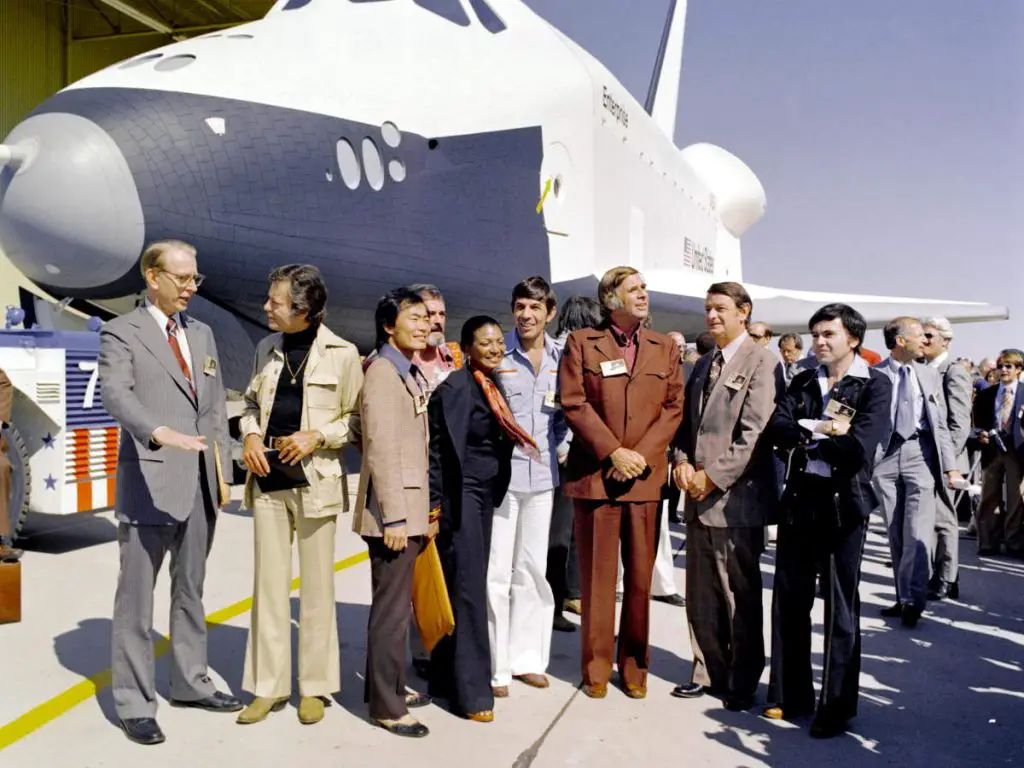
Rolled out on September 17, 1976, Enterprise was the first Space Shuttle ever built. Its purpose was to perform atmospheric test flights after being launched from a modified Boeing 747. It was constructed without engines or a functional heat shield. As a result, it was not capable of spaceflight.
Later, NASA found other practical use for Enterprise. In 1987, the Agency was concerned about how to handle an orbiter returning from space should it suffer a brake failure. To test the efficacy of an arresting barrier, workers slowly winched Enterprise into a landing barrier they had set up at Dulles to see if the vehicle suffered any damage.
Later that same year, NASA used Enterprise to test various crew bailout procedures being developed in the wake of the Challenger accident. In 1990, experimenters used Enterprise’s cockpit windows to test mount an antenna for the Shuttle Amateur Radio Experiment, as no other orbiters were available.
Periodically, engineers removed parts from Enterprise to test for materials durability, and also evaluated the structural integrity of the vehicle including its payload bay doors, and found it to be in sound condition even after years in storage.
In April 2003, in the wake of the Columbia accident, investigators borrowed Enterprise’s left landing gear door and part of the port wing for foam impact tests. The tests provided solid evidence that the foam strike was the cause of the accident.
Shuttle Carrier Aircraft (a modified Boeing 747)

NASA flew two modified Boeing 747 jetliners, originally manufactured for commercial use, as Space Shuttle Carrier Aircraft. One is a 747-123 model, while the other was designated a 747-100SR-46 model. The two aircraft were identical in performance as Shuttle Carrier Aircraft (SCA).
The 747 series of aircraft are four-engine intercontinental-range, swept-wing “jumbo jets” that entered commercial service in 1969.
The SCAs were used to ferry space shuttle orbiters from landing sites back to the launch complex at the Kennedy Space Center and also to and from other locations too distant for the orbiters to be delivered by ground transportation. The orbiters were placed atop the SCAs by Mate-Demate Devices, large gantry-like structures that hoisted the orbiters off the ground for post-flight servicing and then mated them with the SCAs for ferry flights.

Features that distinguish the Shuttle Carrier Aircraft from standard Boeing 747 jetliners
- Three struts with associated interior structural strengthening protrude from the top of the fuselage (two aft, one forward) on which the orbiter is attached.
- Two additional vertical stabilizers, one on each end of the standard horizontal stabilizer, to enhance directional stability.
- Removal of all interior furnishings and equipment aft of the forward No. 1 doors.
- Instrumentation used by SCA flight crews and engineers to monitor orbiter electrical loads during the ferry flights and also during pre- and post-ferry flight operations.
The two SCAs were owned and under the operational control of NASA’s Johnson Space Center, Houston.
Dimensions
- Wingspan: 195 ft. 8 in (59.63 meters).
- Length: 231 ft. 10 in (70.66 meters).
- Height: Top of the vertical stabilizer, 63 ft. 5 in. (19.33 meters) To top of the cockpit area, 32 ft. 1 in (9.78 meters).
- Vertical tip fins on horizontal stabilizers: 20 ft. 10 in. high (6.35 meters), 9 ft. 7 in. long (2.92 meters).
- Weight: Basic weight, NASA 905, 318,053 lb (144,266.414 kg); NASA 911, 323,034 lb (146,525.758 kg)
- Maximum gross taxi weight: 713,000 lb (323,411.36 kg)
- Maximum gross brake release weight: 710,000 lb (322,050.58 kg)
- Maximum gross landing weight: 600,000 lb (272,155.42 kg)
- Engines: Four Pratt & Whitney JT9D-7J gas turbine engines, each producing 48,600 lb (22,000 kg) of thrust.
Performance
- Airspeed limits with, and without an orbiter: 250 knots or Mach 0.6
- Altitude: Typical cruise with orbiter, 13,000-15,000 ft; typical cruise unmated, 24,000-26,000 ft. Minimum temperature at altitude 15 degrees (F) (-9 degrees C)
- Range: Typical mated, 1000 nautical miles (with reserves); maximum unmated, 5500 nautical miles
- Fuel Capacity: 47,210 gallons (316,307 lb) jet fuel
Crew: Two pilots and one flight engineer; additional flight engineer when carrying shuttle.
Sources
- Concorde on Wikipedia
- Tupolev Tu-144 on Wikipedia
- NASA Armstrong Fact Sheet: Shuttle Carrier Aircraft on the NASA website
- “The Shuttle Enterprise” on the NASA website
- How Many Elephants are Left in the World in 2025? - August 17, 2025
- Moon Landings: All-Time List [1966-2025] - February 2, 2025
- What Is Max-Q and Why Is It Important During Rocket Launches? - January 16, 2025
